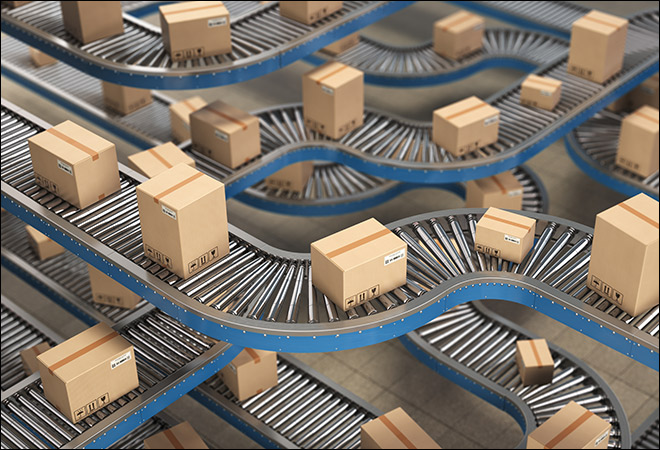
India is transforming. Technology has been the key cause of this tectonic shift across critical sectors like healthcare, education, agriculture, manufacturing and retail, with an explosion of smart and connected devices, robust applications and use cases. This is being powered by a surge in data-centric innovations that harness the power of data through leading technology solutions based on compute, storage and memory. There are tremendous opportunities to leverage the power of technology to enrich the lives of people, optimise businesses and boost a country’s progress.
This sets a compelling stage as India forges ahead to become a trillion-dollar digital economy by 2025. India is a recognised technology powerhouse — it has a rapidly growing market of digital consumers, with over 500 million Internet users; the world’s largest digital identity programme (Aadhaar), with over 1.2 billion people enrolled; <1> and a thriving e-payment ecosystem, with an average of over 1 billion unified payment interface transactions in a month. <2> India’s IT industry generates US$ 191 billion in revenues, with a strong talent base of 4.5 million engineers; <3> the majority of the top 10 global systems integrators are based out of India; and there are over 9000 tech startups, 1600 of which are in the deep technology space, <4> thriving in the country.
We are witnessing unprecedented momentum in the adoption of remote collaboration tools and digital access to services across industries.
Moreover, India’s vast population is the biggest catalyst for tech adoption. Its immense appetite for digital services makes it incumbent on the tech ecosystem to develop solutions that are affordable, scalable and profitable.
The COVID-19 pandemic and the new geopolitical scenario have remarkably accelerated the adoption and innovative implementation of these vital technologies. We are witnessing unprecedented momentum in the adoption of remote collaboration tools and digital access to services across industries. Every segment is getting digitalised to remain relevant and keep up with the times.
It is exciting to see this rigour and energy for innovation and technology advancement. As this journey intensifies, there are several technologies that will be crucial for India to attain its trillion-dollar digital economy goal.
Population-scale Artificial Intelligence (AI) to catapult digital transformation
AI has been around since the 1950s, but is only now becoming ubiquitous because of the fusion of two vital things — the vast amount of data available today, and the availability of compute power and memory, which can make sense of that data and help us derive value from it. We are now at a defining point in history. As we enter the age of AI, India has an opportunity to lead and leverage our unique strengths of technology, data volume, data diversity and talent.
With the potential for population-scale AI adoption, India is in a unique position to maximise the opportunity to drive world-class technology advancement and innovation, focus on human-centric applications and democratise AI for the world.
As we enter the age of AI, India has an opportunity to lead and leverage our unique strengths of technology, data volume, data diversity and talent.
According to the NASSCOM report ‘Implications of AI on the Indian Economy,’ on average, a unit increase in AI intensity by companies that use AI can contribute US$ 67.25 billion — or 2.5 percent of India’s GDP — to the Indian economy in the near term. <5>
Next-generation communications: 5G infrastructure essential for Digital India
5G is the enabler for distributed computing, to make compute available where data is created. It goes far beyond smartphones to connect billions of smart devices. 5G converges the worlds of computing and communications to create virtually unlimited compute power from the cloud to the network to the edge.
India has an opportunity to lead in 5G technology. India’s digital economy needs smart, robust and affordable systems that can support the data requirements of the 5G ecosystem. In India, this new frontier in computing capability will be driven by an ecosystem of open source innovation. Disruption will be generated through partnerships between India’s innovators and developers, anchored by advances in academic and research labs.
5G converges the worlds of computing and communications to create virtually unlimited compute power from the cloud to the network to the edge.
The government needs to look at connectivity just as it sees electricity, roads and water — as part of our social and economic fabric. Therefore, it is important to focus on rural connectivity solutions and driving growth in rural areas, as this will enable access to the global economy. Research indicates that “an 10-percent average increase in mobile broadband adoption causes a 0.6 percent to 2.8 percent increase in economic growth, depending on the model specifications.” <6>
Industry 4.0: Catalysing transformation through rapid automation
India needs to be at the forefront of driving industry 4.0 for its competitive advantage. Digitalisation is at the heart of industry 4.0. This will require innovations and the advancement of key technologies like machine vision, robotics, smart energy infrastructure and emerging edge compute applications. In addition, industry 4.0 has a huge potential to catalyse and promote inclusive and sustainable industrial development in the country. Given India’s thrust on Make in India, it’s important for us to adopt innovative and sustainable manufacturing practices and techniques.
 Digitalisation is at the heart of industry 4.0. Illustration: iStock/Getty
Digitalisation is at the heart of industry 4.0. Illustration: iStock/Getty
As these technologies mature and create a wave of innovations, their applications and use cases will transform critical sectors for India and the world in general.
Given India’s thrust on Make in India, it’s important for us to adopt innovative and sustainable manufacturing practices and techniques.
Healthcare: In the healthcare space, technology has enabled a wide spectrum of applications like telemedicine, medical imaging, enhanced diagnostics, drug discovery and hospital workflow efficiency. The internet of things (IoT) and wearables that can diagnose heart conditions, sensors that monitor epilepsy attacks and glucose monitors that send data straight to smartphones are enabling better self-care. As technological innovations integrate with healthcare delivery, they will enable scale and lower costs, driving up adoption.
During the current pandemic, we are seeing a significant rise in telemedicine and tele-consultation, democratising access to timely, affordable and quality healthcare, particularly for people from remote and rural parts of the country.
Technology is also playing a role in predicting and managing outbreaks using population-scale data and analytics. For instance, in a multi-disciplinary collaboration, Intel India, the Council of Scientific and Industrial Research and the Hyderabad-based International Institute of Information Technology are working to help achieve faster and less expensive COVID-19 testing and coronavirus genome sequencing to understand epidemiology and AI-based risk stratification for patients with comorbidities.
As technological innovations integrate with healthcare delivery, they will enable scale and lower costs, driving up adoption.
Agriculture: About 50 percent of India’s population depends on the agricultural economy where technology can play an important role in transforming the sector.
Intelligent edge-based technologies, data analytics, robots and drones can provide farmers with real-time information on crops, soil deterioration, geographical factors and pest vulnerability, thereby improving farm yield.
It is encouraging to see technology being leveraged across the value chain, from farming to distribution, delivery and consumption of the produce. There will be continued traction in this area.
Education: The education sector has been one of the fastest adopters of technology, with an exponential growth in remote learning, smart classrooms, and personalised and immersive learning and tools to design learning activities. The e-learning ecosystem will become mainstream and empower the masses with access to quality content and instructors. It is also important to build a complete end-to-end solution in the education space so that children in rural areas do not miss out on education.
Technology manufacturing ecosystem: Opening a new vista for India’s global competitiveness
With India’s focus on making the country a global manufacturing hub, technology manufacturing will become an essential pillar of such aspiration. Electronics and semiconductors touch every aspect of our lives today, including industrial, healthcare, retail, communications and governance, and will play a major role in cloud, IoT, AI, autonomous driving and other disruptive segments in the future. It is estimated that by 2025, India will be one of the largest electronics markets in the world, valued at US$ 400 billion. <7>
Given the country’s focus on self-reliance, it is imperative for India to develop a robust semiconductor manufacturing ecosystem by leveraging its strengths in design, digital consumption and skills.
It is estimated that by 2025, India will be one of the largest electronics markets in the world.
Women in Technology: Inclusion is critical for innovation
As emerging technologies like AI, machine learning, cloud, intelligent edge and 5G are transforming our lives and work, real positive impact can only be achieved when these solutions are designed, developed and applied by a diverse pool of innovators and developers. In this context, the role of women and augmenting gender diversity becomes vital.
At this juncture, when India focuses on attaining sustained high growth, it is essential for the country to accelerate inclusive participation of women in the workplace. India has a big opportunity to boost GDP by advancing women’s equality — adding US$ 770 billion to the GDP by 2025 <8> — but this will require comprehensive change.
 It is essential for India to accelerate inclusive participation of women in the workplace to focus on attaining sustained high growth. Illustration: DigitalVision Vectors/Getty
It is essential for India to accelerate inclusive participation of women in the workplace to focus on attaining sustained high growth. Illustration: DigitalVision Vectors/Getty
While there have been several interventions made in earnest to bridge the gender diversity gaps, it requires sustained and concerted efforts to have the desired impact. In this endeavour, collaboration between the government, industry and academia is key to making quick progress towards the equal participation of women at all levels of the workplace and economy.
Intel India’s commitment to accelerate innovation and technology advancement in the country
Intel India has been an integral part of India’s digital transformation and innovation journey. India is home to Intel’s largest design center outside the US, with state-of-the-art design facilities in Bengaluru and Hyderabad. Intel has invested over US$ 6 billion in India to date and continues to expand its research and development and innovation footprint in the country.
The need of the hour is for the ecosystem comprising of the industry, startups, academia and the government to collaborate and work together to develop solutions to unleash the potential of data-driven technologies and transform business and society for the better.
Intel India has contributed significantly to Intel’s technology and product leadership with its design centres engaged in cutting-edge engineering work in the areas of System on a Chip (SoC) design, 5G networks, graphics, software and platform for the cloud/data center, client and IoT markets involving advanced technology areas like AI, 5G and autonomous systems. Intel has been working with the vibrant technology ecosystem in the country and is committed to accelerate innovation, research, technology advancement and adoption to enrich the lives of the people.
India’s strength lies in its large population, growing economy, pace of digital adoption and core tech competencies supported by a robust tech ecosystem, and a burgeoning innovation and entrepreneurship environment. The need of the hour is for the ecosystem comprising of the industry, startups, academia and the government to collaborate and work together to develop solutions to unleash the potential of data-driven technologies and transform business and society for the better. It requires disruptive innovations, compelling business models and use cases, breakthrough research, intellectual property and conducive policies geared towards the seamless creation and adoption of emerging tech-based solutions. These efforts will lead to the advancement of AI, machine learning, cloud, 5G and other technologies, and accelerate the digital transformation of India and the world. India should seize this opportunity to lead the next wave of innovation.
Endnotes
<1> “Digital India: Technology to Transform a Connected Nation”, McKinsey Global Institute, 2019.
<2> “UPI Crosses 1 Billion Transactions Over 100 Million Users In October”, BW Businessworld, October 28, 2019.
<3> “Industry generates 191 billion in revenues; hires 205,000 new employees in fy 2020”, NASSCOM.
<4> “Over 1,300 Startups Added in 2019, over 8,900 Tech-Startups in India Now: Nasscom”, The Economic Times, November 5, 2019.
<5> “Implications of AI on the Indian Economy”, NASSCOM Community, July 24, 2020.
<6> Börje Ekholm, “How 5G Could Speed up Global Growth”, World Economic Forum, January 12, 2018.
<7> “Electronic Systems Sector in India - Electronic Devices Industry,” Invest India.
<8> “The Power of Parity: advancing women's equality in Asia Pacific”, McKinsey Global Institute, May 2018.
The views expressed above belong to the author(s). ORF research and analyses now available on Telegram! Click here to access our curated content — blogs, longforms and interviews.




 Digitalisation is at the heart of industry 4.0. Illustration: iStock/Getty
Digitalisation is at the heart of industry 4.0. Illustration: iStock/Getty It is essential for India to accelerate inclusive participation of women in the workplace to focus on attaining sustained high growth. Illustration: DigitalVision Vectors/Getty
It is essential for India to accelerate inclusive participation of women in the workplace to focus on attaining sustained high growth. Illustration: DigitalVision Vectors/Getty PREV
PREV


